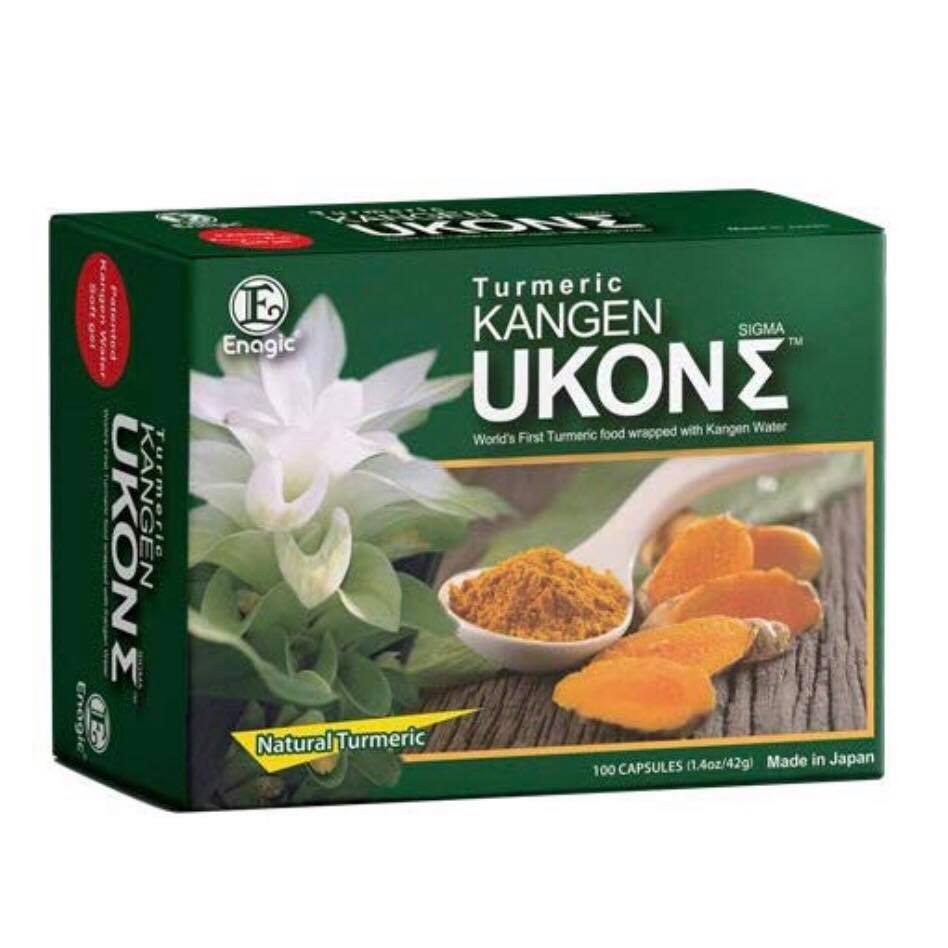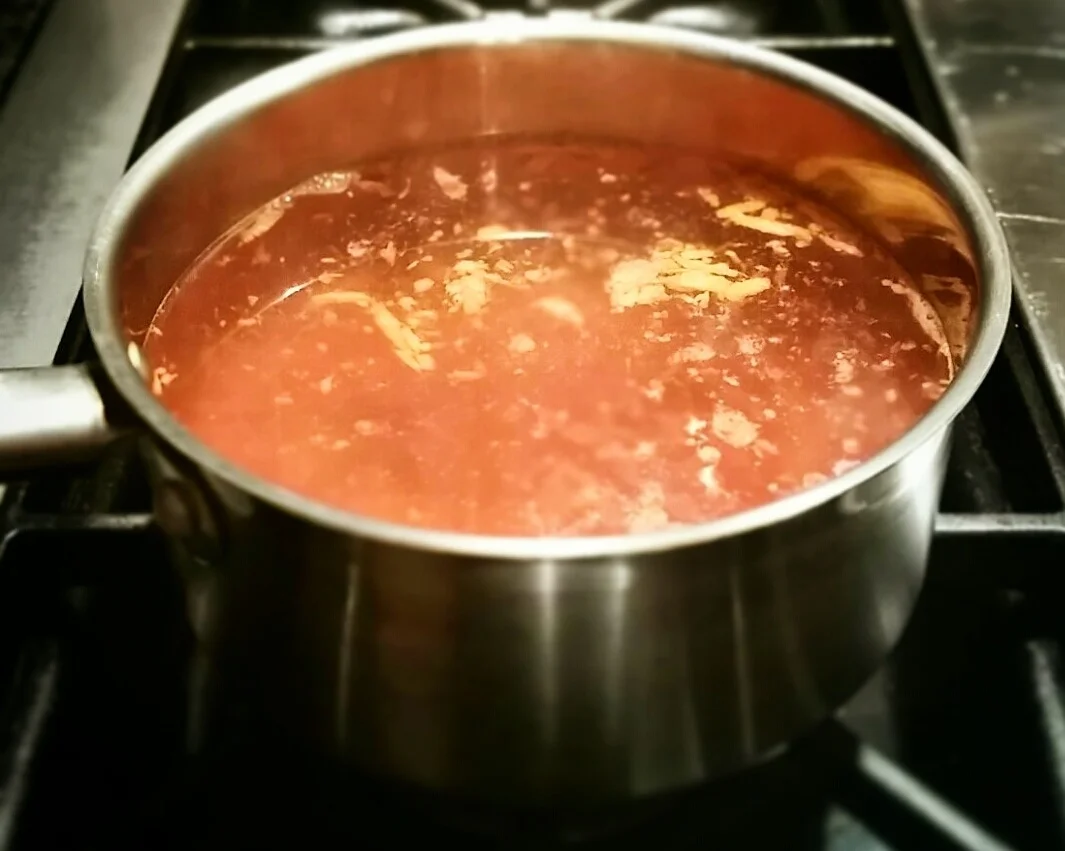Two Healing Turmeric Green Tea Recipes
Unless you have been living under a rock, you have surely heard of the fantastic health benefits of green tea and the popular Indian spice (although still relatively unknown in the Western world), called turmeric. I've been drinking green tea in lieu of coffee for some time now, but I only recently made turmeric a daily regimen.
A few months ago my husband complained of having debilitating pain in his neck, only to find out that this pain was the result of three herniated disks. The doctor told him to take Advil, but I decided that before he gets started on the anti-inflammatory drugs with countless negative side-effects, especially when taken regularly, he should start with turmeric to see if it helps.
I started making turmeric tea (the simple recipe below) for him three times daily, and within two days, he was able to turn his neck, and in two more, the pain was completely gone. I was stunned. I had read countless studies on turmeric benefits, but never expected it to work so quickly and effectively.
From that moment on, I was hooked. These days I make turmeric tea once or twice daily, whether anything ails us or not. Even my daughter has loved it since she was about six or seven, especially with a little raw honey in it. I know that my husband is a convert and asks me for it should I forget to make it, God forbid! And personally, I found that it has helped ease muscle aches after a heavy workout session, alleviate pain from tendonitis in my wrist, as well as the ache in my knee from a torn meniscus. I've even taken it for headaches.
The only issue I had was that my daily regimen was pretty full. I drank tons of green tea and water throughout the day and an occasional latte, so where was I going to squeeze in the turmeric tea? It was then that it came to me. Why not combine them together? So I did. The result? A better tasting green tea!
Although I've always liked green tea, some of my clients have complained that the taste can take a little getting used to (especially if you forego sugar, which you should!). So once I combined my turmeric and green tea, I was pleasantly surprised that the combination yielded a nice, mellow taste and the result was quite enjoyable.
Now I make this little concoction daily and sip on it throughout the day. I find that it makes my joints feel better and as an added bonus, suppresses my appetite or desire to eat out of boredom.
Best part? It is super easy. I know there are fancy, schmancy recipes of turmeric tea blended with coconut milk, and ginger, and nutmeg... and they ARE delicious (and I've included my own version at the bottom of this blog just in case you have the time to do it up one day), but I am a busy girl and convenience is key! So I came up with the easiest and fastest way to do it, while still reaping the benefits of consuming the fresh turmeric root itself.
3 TIPS TO MAXIMIZe HEALTH BENEFITS
In order to maximize the health benefits of turmeric, you have to make sure that you are maximizing absorption and therefore, bioavailability in your body. Here are three tips to do just that.
1. Choose fresh, organic, raw turmeric root over supplements
Fresh herbs and spices are almost always more desirable than their dried counterparts, and turmeric is no exception. Simply put, using fresh turmeric root maximizes the benefits of hundreds of its powerful phytocompounds.
TASTE: Fresh turmeric tastes better and is less bitter than dried turmeric.
EFFECTIVENESS: Consuming the raw root makes it easier to get effective levels of curcumin, one of turmeric's most active and best known phytocompounds, which boasts incredible antioxidant and anti-inflammatory properties, because:
Significant amounts of curcumin are degraded in the drying process
Turmeric loses some of its essential oils and pungency in the drying process
Using the whole root improves the absorption of curcumin, because the root contains natural oils that can substantially enhance the bioavailability of curcumin, because curcumin is fat-soluble (see Tip #3 below).
Note: I recognize that turmeric root is not readily available everywhere and that not everyone has the time to mess with the fresh root daily, so taking a well verified turmeric supplement such as KANGEN UKON™ 100% Organic Turmeric Supplement (the brand my family and I use daily) is your next best option. It is 100% organic, gluten-, preservative-, heavy metal-, and GMO-free. Ideally, turmeric should be part of your daily regimen, so if the fresh root isn't an option, choose the supplement.
2. Include a dash of black pepper
Black pepper is a key ingredient, as turmeric will not absorb well without its presence. One of the ways that the liver rids our body of foreign substances is by making them water soluble. This makes them easier to excrete and get out of your system. However, black pepper inhibits that process, thereby increasing the bioavailability of turmeric's powerful phytocompounds.
KANGEN UKON™ 100% Organic Turmeric Supplement
If you don’t have access to turmeric or just don’t have the time to make the drink every day, the KANGEN UKON™ turmeric supplement is the next best thing.
It is harvested and produced in Okinawa, Japan, the Japanese island known for the longevity of its people and for growing the world’s best turmeric. KANGEN UKON™ patented softgels are encased with six different healthy oils to maximize absorption and bioavailability.
LEARN MORE about what sets this turmeric supplement apart from any other on the market.
3. eat a healthy fat with your turmeric
Turmeric is fat-soluble, which means that it dissolves in fat. Without fat, the active component in turmeric, curcumin, has a difficult time making it past the stomach, into the small intestine, and into the blood where it can offer the greatest benefits. By eating a healthy fat with your turmeric tea, the curcumin can be directly absorbed into the bloodstream through the lymphatic system, and in part, bypass the liver. Examples include:
Consuming turmeric (or taking the supplement) after your biggest meal of the day, during which you consumed some health fats (e.g., avocado, olive or coconut oils, grass-fed and organic meats, eggs, cheese)
Making golden milk tea. Although there are countless recipes for golden milk (I've included one of them below), they usually involve milk and coconut oil. If you're making a paste from organic turmeric powder, it can be prepared in advance and kept in the refrigerator for weeks.
Eating a few pieces of avocado before drinking the tea
Stirring in a half a teaspoon of olive oil or coconut oil before adding it to a smoothie
Mixing it into olive oil and then tossing it in with your salad or veggies
WANT EVEN MORE INCREDIBLE ANTI-INFLAMMATORY BENEFITS?
ProLon® Fasting Mimicking Diet is the first and ONLY scientifically designed and clinically tested weight loss program recommended by over 10,000 clinicians to benefit your health. It was developed by one of the world’s leading longevity scientists and patented for its healthy-aging effects.
Whether you want to lose a few pounds, promote cellular rejuvenation, maintain metabolic balance and healthy levels of systolic blood pressure, or just need a reset, this is a quick, fool-proof 5-day means to that end.
PREPARING TURMERIC TEA
When buying turmeric, choose the larger pieces. They are easier to peel. Additionally, they tend to save time, as it more time efficient to peel and grate one large piece than 3-4 tiny ones.
If you have leftovers, loosely wrap the turmeric so that it doesn't mold, and store it in the refrigerator.
For longer term storage, wrap unused turmeric root in a paper towel, and store it in a plastic bag in the refrigerator, where it will keep for about a week. It can be frozen for longer. The flavor and aroma may suffer, and it may be a bit mushy when thawed, but still fine to add to your recipe. Hint: freeze it in usable sizes so that you can defrost only what you will use at one time.
1. Scrub the root well and wash off any dirt. There is no requirement to peel the turmeric, but I prefer to. I use a regular peeler to peel the skin just like you would a carrot. One large piece, like the one shown below is enough to make several cups of tea. The rule of thumb is about 1 tablespoon per cup.
WARNING: Be careful with your clothes and light colored counters. Turmeric can stain everything yellow if you are not careful.
2. You can grate the turmeric with a microplane, ginger grater or the small side of a cheese grater. Turmeric can also be smashed with a garlic press or pestle and mortar. Remember, the more fine the turmeric, the more likely it is to stain your fingers, your clothes, your pot, your cup... so slightly larger pieces are my personal preference. I even leave the bits in my tea, because I like the taste. If you prefer a more traditional, non-chewy tea, use a finer grater and strain your tea through a tea filter.
3. This is what the finished product will look like (unless you use a finer grater). This is approximately 3 TBS of shredded turmeric, all from the one large piece shown above. Roughly 2 inches of fresh turmeric root will yield 1 tablespoon of the freshly grated spice.
If you are using turmeric in a recipe, the general rule of thumb for converting dried herbs or spices to fresh is 1:3. This means that 1 tsp of dried spice = 3 tsp or 1 TBS of fresh.
4. While grating the turmeric, bring a pot of filtered water to a vigorous boil and then turn off the heat source. I usually wait about a minute and before adding the shredded turmeric to the pot to avoid scalding its phytonutrients.
5. Once you add the shredded turmeric to the pot, the water will begin to turn a yellowish orange color. Let the turmeric steep for about 10 minutes and watch the color of the water deepen into a deep reddish orange.
6. After the turmeric has had sufficient time to steep, pour the water into a cup. If you'd like to strain the turmeric so that you have a clearer liquid, you can use a tea filter to do so. I actually prefer having the turmeric bits in my tea, because I enjoy the taste. Either way, it's a personal preference.
Once you've poured the turmeric tea, you can throw in an organic green tea bag of your choice and allow it to steep for another 2-3 minutes. Don't forget to throw in a pinch of pepper to maximize absorption and bioavailability. Then sip and enjoy the wonderful taste and amazing benefits.
Make this healthy concoction daily and feel the difference!
Best part? You can actually reuse the turmeric in your pot 2-3 times. I just leave the remnants in the pot and then add filtered water when I'm ready for more. Heat the pot, but avoid bringing the water to a boil. The color of the tea will change slightly into a deeper red color.
recipe 1
Basic Turmeric and Green Tea
makes 1 serving
Ingredients
1 TBS Turmeric
1 dash of Organic Black Pepper*
2 cups Filtered Water
Raw Organic Honey (optional - I personally prefer mine unsweetened)
* Black pepper is key! The liver rids our body of some foreign substances by making them water soluble so they can be more easily excreted. Black pepper inhibits that process, thereby increasing the bioavailability of turmeric's powerful phytocompounds.
Directions
Clean and peel your turmeric root (See directions above)
Grate the turmeric using a microplane, ginger grater or the small side of a cheese grater. Turmeric can also be smashed with a garlic press or pestle and mortar. Warning: The more fine the turmeric, the more likely it is to stain your fingers, your clothes, your pot, your cup... so slightly larger pieces are my personal preference. I even leave the bits in my tea, because I like the taste. If you prefer a more traditional, non-chewy tea, use a finer grater and strain your tea through a tea filter.
Boil 2 cups of filtered water
When the water comes to a vigorous boil, turn off the stove and let the boiling water rest for about one minute.
Drop in the grated turmeric and let it steep for about 10 minutes
After the turmeric has had sufficient time to steep, pour the turmeric tea into a cup. If you'd like to strain the turmeric so that you have a clearer liquid, you can certainly do that. I actually like having the turmeric bits in my tea, because I enjoy the taste of it. Either way, it's your personal preference.
Throw in a bag of organic green tea and allow it to steep for another 2-3 minutes.
Add a pinch of pepper and eat a healthy fat before consuming turmeric (e.g., avocado, whole fat yogurt, or just add in some full fat coconut milk). This will improve absorption and increases bioavailability.
Make this healthy concoction daily and feel the difference! You can also make a large pot and keep it in the refrigerator for up to two days. Don't forget to warm it up before drinking, as the warm temperature will also maximize bioavailability.
Best part? You can reuse the turmeric that's left in your pot 2-3 times. I just leave the remnants in the pot and then add filtered water when I'm ready for more. Heat the pot, but avoid bringing the water to a boil. The color of the tea will change slightly into a deeper red color.
recipe 2
And if you decide to get fancy schmancy with your turmeric tea, here's a recipe that will blow your socks off:
Fancy Schmancy Turmeric Tea
makes 1 serving
Ingredients
2 cups Filtered Water
1 tsp Organic Ceylon Cinnamon**
1 pinch Organic Ground Cloves
1 pinch Organic Nutmeg Powder
1 tsp Organic Ginger Powder (optional)
1 TBS Turmeric
1 dash of Organic Black Pepper*
Raw Organic Honey to taste for sweetening
1-2 cups Full Fat Organic Coconut Milk***
* Black pepper is key! The liver rids our body of some foreign substances by making them water soluble so they can be more easily excreted. Black pepper inhibits that process, thereby increasing the bioavailability of turmeric's powerful phytocompounds.
**(Ceylon cinnamon has been shown to decrease cholesterol and blood pressure)
*** If you choose a different brand, make sure that it does not contain carageenan and that the can's lining is BPA-free
Directions
Clean and peel your turmeric root per the directions above
Grate the turmeric using a microplane, ginger grater or the small side of a cheese grater. Turmeric can also be smashed with a garlic press or pestle and mortar. Warning: The more fine the turmeric, the more likely it is to stain your fingers, your clothes, your pot, your cup... so slightly larger pieces are my personal preference. I even leave the bits in my tea, because I like the taste. If you prefer a more traditional, non-chewy tea, use a finer grater and strain your tea through a tea filter.
Boil 2 cups of filtered water
When the water comes to a vigorous boil, turn off the stove and let the boiling water rest for about one minute.
Drop in the cinnamon, clove, nutmeg, ginger and turmeric and let it steep for about 10 minutes
Strain out the herbs, add the milk and honey and enjoy!
RECOMMENDED DOSAGE
According to the University of Maryland Medical Centers, adults may consume 1.5 to 3 g of raw, cut turmeric root each day. The curcumin content of turmeric varies depending on whether you are using the fresh root or the dried powder. Regardless, however, it is difficult to determine how much curcumin you are ingesting when consuming turmeric in these forms. To obtain the most curcumin, if you are using powder, be sure to use turmeric rather than curry powder. A study analyzing curcumin content in 28 spice products described as turmeric or curry powders found that pure turmeric powder had the highest concentration of curcumin, averaging 3.14% by weight. The curry powder samples, with one exception, contained very small amounts of curcumin.
Dietary supplement manufacturers use a process known as standardization, which means that turmeric powder is standardized to contain a specific amount of curcumin in every dose. This makes it easy for the consumer to determine exactly how much curcumin they are consuming for a specific health benefit. Adults usually take 400 - 600 mg of standardized curcumin powder up to three times each day. However, if you choose to take curcumin as supplement, I strongly recommend asking your physician what the appropriate dosage is for you, especially if you are taking other supplements and/or medication.
SAFETY CONSIDERATIONS
You shouldn't use turmeric if you have gallstones or bile duct dysfunction. Pregnant women shouldn't their doctor if it is safe for them to use turmeric. In rare cases, extended use can cause stomach upset or heartburn. Some evidence also suggests that curcumin can interfere with a chemotherapy agent used to treat breast cancer. To be safe, please discuss the advisability of adding turmeric to your daily regime with your physician to make sure that it is safe for you.
ABOUT THE AUTHOR: Victoria Gregory is an Integrative Nutritionist and founder of NEWTRITION NEWYOU. Her focus—whether with private clients, readers of her blog, or her followers on social media— is whole body wellness, incorporating whole-food nutrition, supplementation, exercise, toxin-free living, and mindset coaching. Victoria’s personal mission is to help make the world a healthier place, one person at a time, and she has helped thousands of people find joy and self-love through better eating habits and mindfulness. Learn more about Victoria.

















